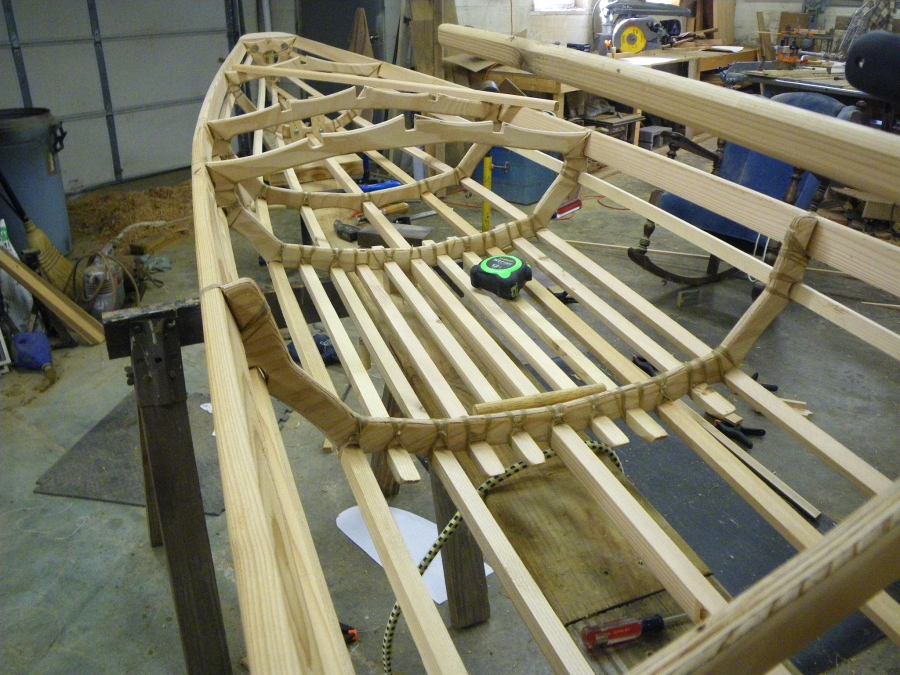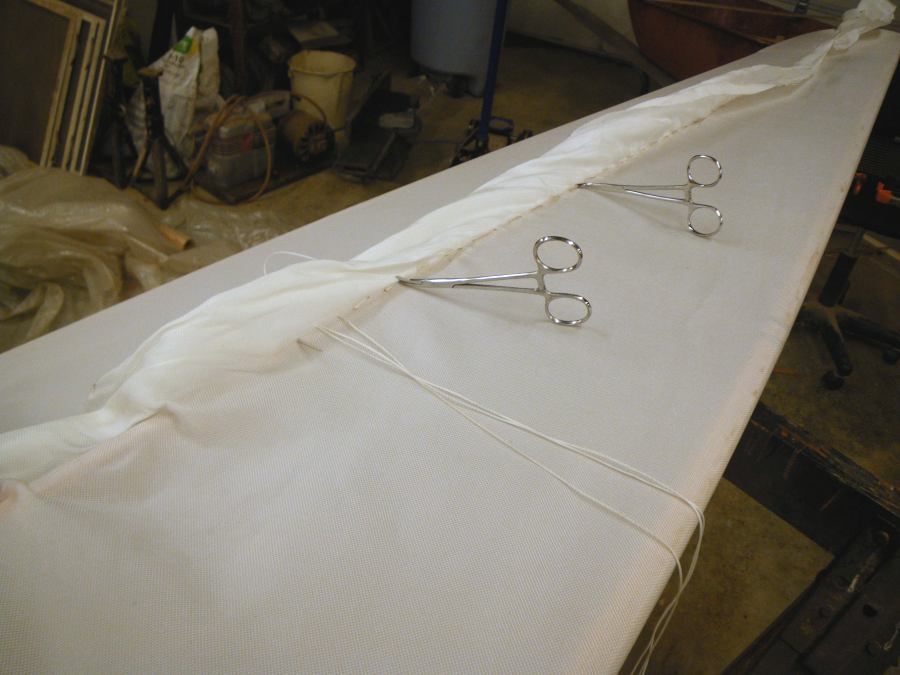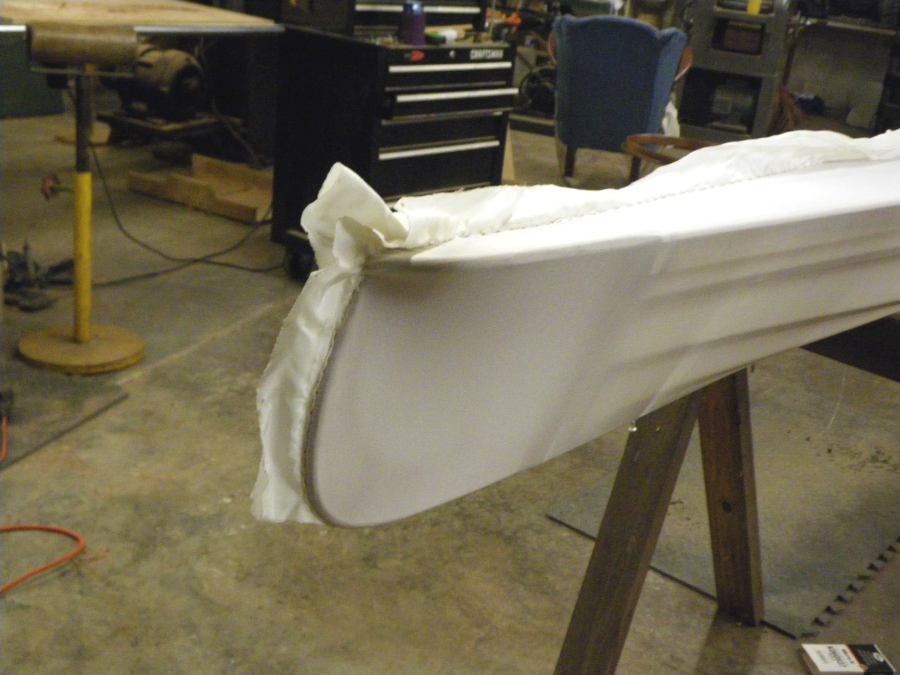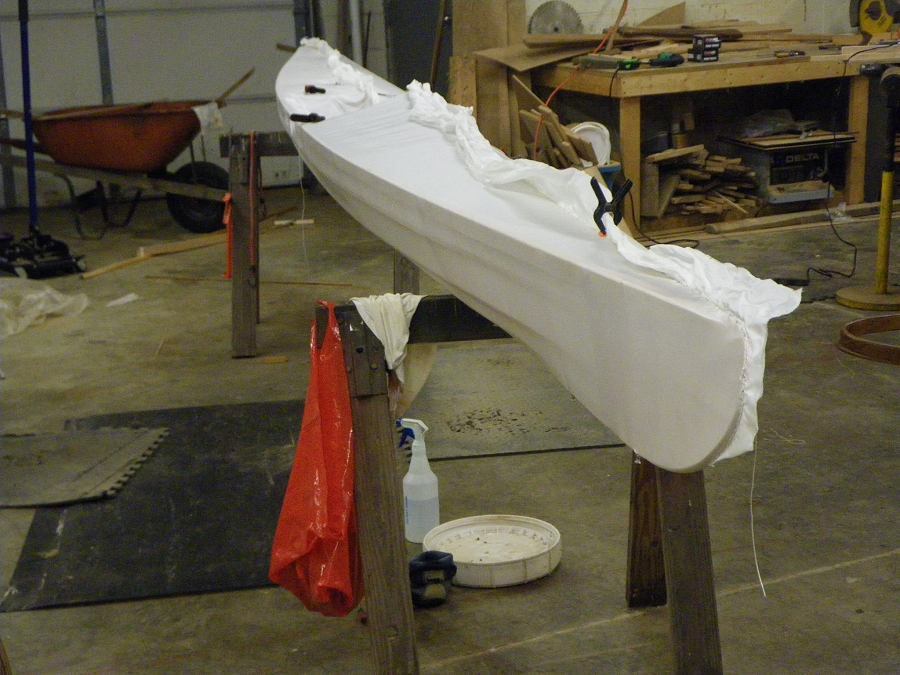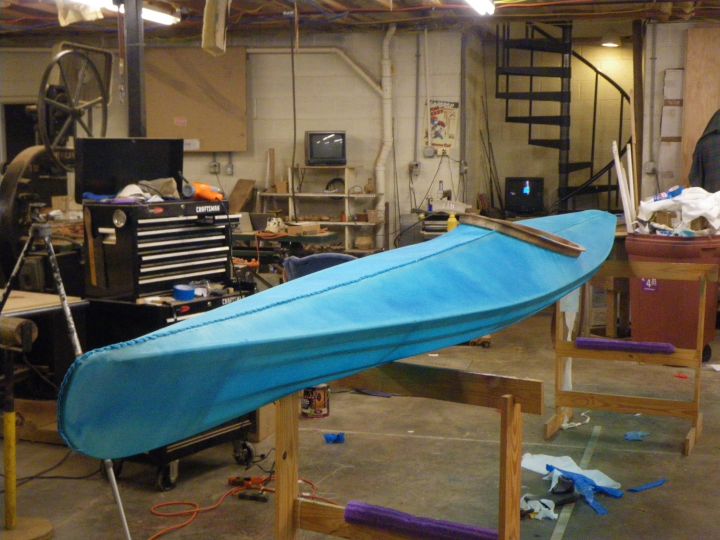Frank, I am covering it with a 7 oz nylon. That is as light a skin as I will use. I have seen the Kelvar covered boats. The ones I have seen use a really lightweight material that is just not strong enough for my tastes. They work but you just have to be careful with them. With mine you don't have to worry about anything except a really sharp piece of metal.
Looking really fast on the drawing, but what makes a boat faster than other?
Sleekness? Low gravity center? Smooth skin? Ribs profile?
I guess that everything can affect performance positively or negatively.
Your last sentence summed it up perfectly!! The short answer is the lower the resistance of the hull against the water the more speed it will make for from the same amount of effort of the paddler. But you have to be able to keep the boat upright and that is where the compromises start Toni.
Everything in hull design is a compromise. The most efficient hull shape is round, like a circle. It has the least amount of wet surface area and the lowest resistance. Problem is it has no stability, there is nothing to keep it from rolling upside down. So you have to flatten out the hull and/or add some flair to sides so you paddle it, that makes the resistance go up. Adding width (generally speaking) makes a boat more stable but it tends to make it have higher resistance too.
Longer hulls have more speed potential but they have more resistance at the slower more normal speeds. Racers like longer boats while most of us need shorter boats. Then there is point when it gets so short it needs to be wider to be stable.

It's a viscous circle and everything you do is a compromise. It just a matter of finding the best compromises.
This boat is a little bit longer for better higher speeds but that means it takes more effort at slower laid back paddling speeds.
I used a more rounded hull shape to lower the wetted surface area. That means it is going to be less stable and will take a bit more experience for the paddler to be comfortable in it.
I made the ends fairly narrow which lowers surface area but this lowers the stability of the boat some.
I could make the boat even narrower and make some pretty big increases in the performance POTENTIAL (not that I am strong enough to take full advantage of it). But I doubt I would be comfortable in the boat because it would be so tipsy.

